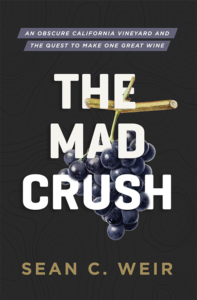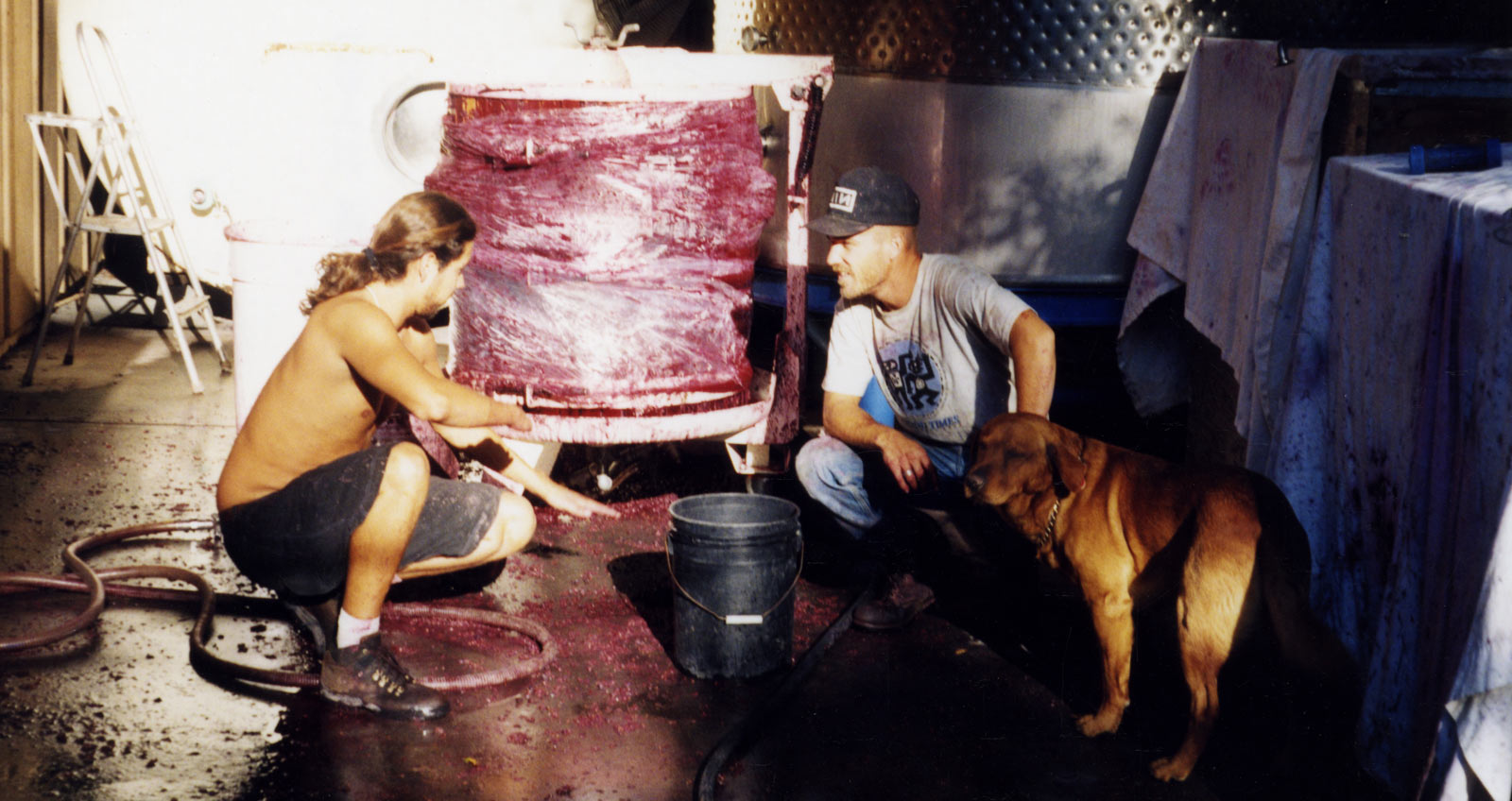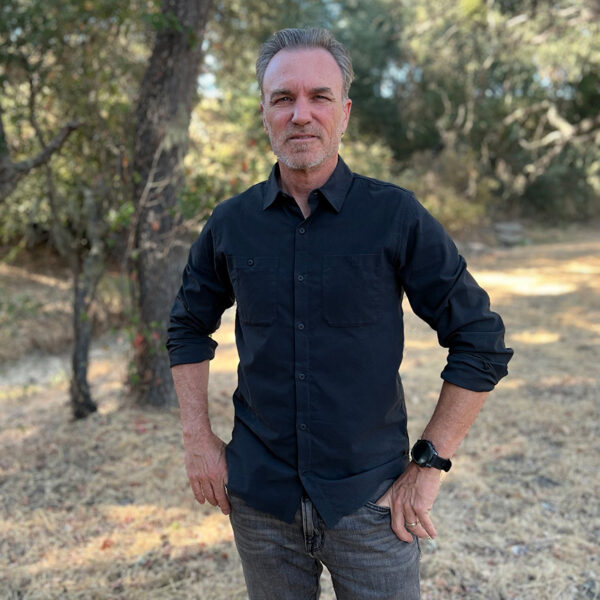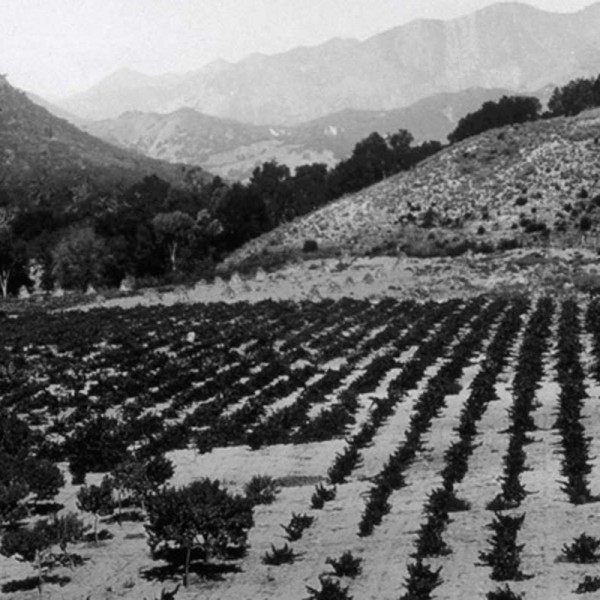Loading Content...
An Obscure California Vineyard and the Quest to Make One Great Wine

 Introducing the all-new expanded second edition of the cult winemaking memoir, landing on October 29, 2024 with a new afterword and 30 pages of additional storytelling.
Introducing the all-new expanded second edition of the cult winemaking memoir, landing on October 29, 2024 with a new afterword and 30 pages of additional storytelling.
In the summer of 1974, a young man named Bill Greenough found his way to a remote California canyon where a century-old Zinfandel vineyard had been lost to history. Toiling alone with nothing more than a pick and shovel, Greenough embarked on an audacious dream: to bring the abandoned vines back to life and start his own fledgling winery. He devoted the next 20 years to this herculean task, trading a monied Montecito upbringing for the life of a rural iconoclast. And in the fall of 1995, it all culminated in an unforgettable grape harvest, when an unlikely cast of characters joined Greenough for a season of folly, adversity and self-discovery. The Mad Crush is the true story of that headstrong vintage—and of a decades-long quest to make one great wine.
“PERFECTLY CAPTURES THE ESSENCE OF WINEMAKING, conveying the labor, love, and dedication that go into crafting exceptional wines…A delightful read that combines engaging storytelling with rich character development. It’s a must-read for anyone interested in the world of wine or simply looking for an entertaining story.” – Joe Campbell, Wine Bulletin
“A GREAT READ AND A RARE WINE BOOK that serves as an interesting narrative and not a reference book. Enjoyable and educational.” -Marc Bona, Cleveland Plain Dealer
“AS RICH AND COMPLEX AS THE WINE THAT INSPIRED IT…You’ll be on tenterhooks as Weir spins the tale of the headstrong 1995 Saucelito Canyon Zinfandel.”
-Leah LeMoine, Phoenix Magazine
“FILLED WITH PASSION, MYSTERY AND MISCHIEF…”
-Mary Orlin, San Jose Mercury News
“HISTORICAL, WITTY AND LAUGH-OUT-LOUD FUNNY…”
-Russ Winton, Modesto Bee
Listen to the author interview on NPR’s Journeys of Discover with Tom Wilmer
"While working that now-distant harvest, I’d discovered that the true romance of winemaking was the process itself, the act of physically willing mere grapes to become something infinitely more beautiful, and more lasting. Left to their own devices, grapes will just rot. But when turned into wine, they tell a story. This is the story of the 1995 Saucelito Canyon Zinfandel, and of those who made it."
115 Years in The Making

The property looked different yet familiar to me. Some of the rough edges had been polished. The lawn was greener, the paint on the winery was brighter. But by nightfall, after the crowd was gone and when the coyotes started howling, I was sure that Saucelito Canyon would feel largely unchanged.
Despite the many wines being poured that evening, I only had eyes for the 1995 vintage. It was a wine that I had helped make, and that I hadn’t tasted in more than a dozen years. I watched intently as the server dusted off the bottle, and I flinched a bit when the corkscrew penetrated the cork. In some ways, that seal was sacred to me. Now it was broken.
I watched as the wine tumbled into the glass, deep purple at its core, but bronzed by age at the ridges. And as I worked up the nerve to tilt my nose to the glass, I wondered: Could this wine still speak to the 1995 harvest? Or had it turned to vinegar, leaving no evidence of the escapades that it had inspired once upon a time?
While working that now-distant harvest, I’d discovered that the true romance of winemaking was the process itself, the act of physically willing mere grapes to become something infinitely more beautiful, and more lasting. Left to their own devices, grapes will just rot. But when turned into wine, they tell a story.
This is the story of the 1995 Saucelito Canyon Zinfandel, and of those who made it.
The first time Bill made wine, he was buck naked. Clothing wasn’t optional at the communal grape stompings on Mountain Drive above Santa Barbara. It was forbidden.
“You could wear a hat, but that was about it,” Bill said.
So there he found himself, in a five-foot diameter vat, literally hanging out with other naked women and men, their arms locked as they stomped the fruit and whooped it up. The year was 1968.
Bill had moved to Mountain Drive in the spring. He came from nearby Montecito, a wealthy enclave just south of Santa Barbara. He was newly married. He had a friend who lived on Mountain Drive, and Bill had always admired his friend’s adobe house. Bill also liked the rambunctious, eccentric ambiance of the neighborhood, which was in direct contrast to the one he had grown up in.
When the friend told him he was moving to Mexico and was putting the house up for sale, Bill asked him his price. He said $27,500. Bill countered with an offer of $30,000, to include the house and the Ferrari Spider that was in the garage. His friend accepted, and handed over the keys to the house and the car.
Mountain Drive wasn’t just a neighborhood. It was a countercultural outpost populated by artists, writers, builders, potters, performers and other assorted free spirits.
In loftier moments, you could call winemaking an art. Practically speaking, as Bill had told me, it’s a craft. But toward the end of the crush, there’s little time or energy left for elegant thoughts. Your brain is foggy, your spine aches, your hands are scored and stained red, and shit just needs to get done.
At that point, winemaking is neither an art nor a craft, but rather just a monkey on your back. And to get the monkey off your back, you need to plow ahead and press the wine and get it into the barrel.
At the conclusion of fermentation, you have fresh new wine. It doesn’t taste like the wine you find in a bottle. It’s raw and simple and even a bit spritzy. The only thing it has on its side is time. Much of this new wine can be easily drained from the fermentation vessel, in which case it’s called “free-run” juice. Once you remove the free-run juice, you’re left with a sopping wet mass of grape skins. This is what needs to be pressed.
Pressing is the act of squeezing the grape skins to liberate extra wine, not unlike wringing a sponge. At Saucelito Canyon, we used a small variation on the classic wooden “basket” press that you see in illustrations of antique winemaking.
This press was pretty tiny for even a small commercial winery, and it could have even qualified as home winemaking equipment. So pressing was no small chore at Saucelito Canyon. We had to shovel the wet skins out of the fermentation bins and tanks, one five-gallon bucket at a time. We would carry the heavy buckets over to the press and dump them in. Shovel, carry, dump, return. It was usually a tag-team operation—one guy in the tank with the shovel, the other on the ground hauling buckets. Once the press cycle was over, we would pry the dense grape skin cake apart by hand and shovel, tossing the pieces into a field bin for disposal in the vineyard.
It was hard labor, but bucket by bucket, we slowly made our way toward the finish line of the 1995 crush.
In A Remote Canyon
 View Detail
View Detail
Sean Weir grew up in Sonoma Valley back when it put the “country” in wine country. He enjoyed his first crash course in wine appreciation as a 20-year-old backwaiter at the Domaine Chandon restaurant in Napa Valley. He later worked …
 View Detail
View Detail
The Zinfandel vineyard at Rancho Saucelito in 1894, with vines spaced for farming by horse and plow. The vineyard was planted 14 years earlier in 1880.
In Vino Veritas
Thanks to the following artists…Book cover design by Jessica Clogston-Kiner; back cover photograph (and home page splash photo above) by Chris Leschinsky; video by Rob DaFoe.
If you have thoughts or questions regarding The Mad Crush, I’d love to hear from you:
seancweir at gmail
eightzerofive 709 3817
MEDIA RESOURCES
Click here to download a high-resolution book cover graphic.
Click here to view the 2024 book announcement press release.
Click here to download a high-resolution author photo.